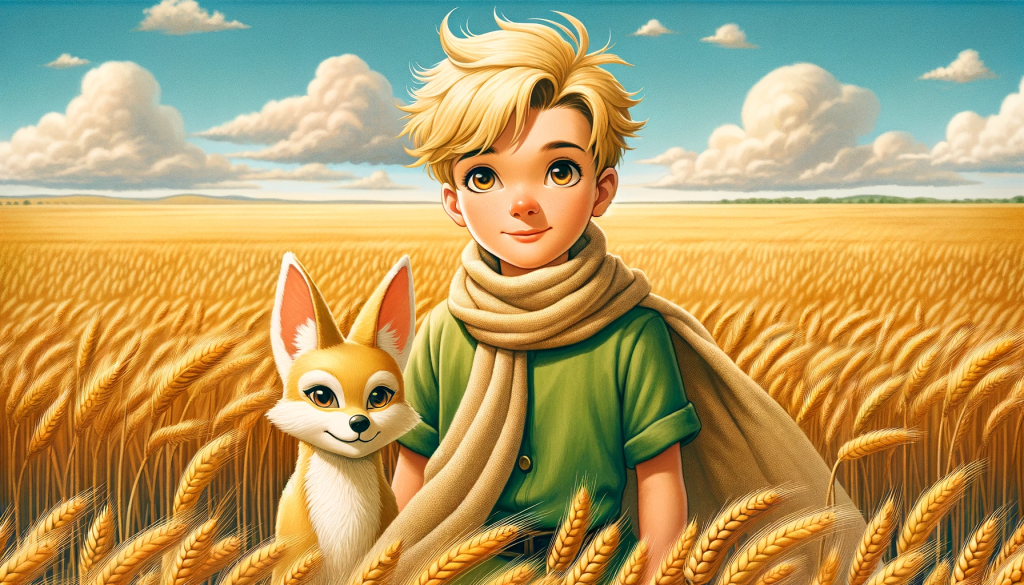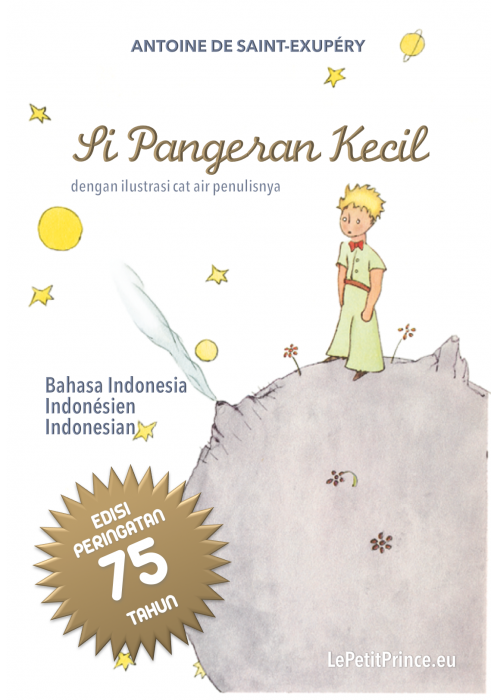What’s This?
This site explores “Le Petit Prince” books. On this first step, this site will display LPP books, translated to some languages and cultures. Even only by viewing the map, we can see the cultural diversity of our planet.
Summarise the story of Le Petit Prince!
The Little Prince is a story about a young prince who lives on a tiny asteroid with only three volcanoes, a flower, and a few baobab trees. One day, the prince decides to leave his home to explore other planets and learn about the world. He travels to six different planets, each inhabited by a strange character, including a king, a vain man, a drunkard, a businessman, a lamplighter, and a geographer.
On his journey, the prince meets a pilot who has crashed in the Sahara Desert. The pilot and the prince become friends, and the prince tells the pilot about his adventures and the lessons he has learned. The prince also befriends a fox, who teaches him about the importance of taming and the meaning of true friendship.
Throughout his journey, the prince realises the true value of love, friendship, and sacrifice. He learns that what is essential is invisible to the eye and that the most important things in life cannot be seen or touched. Eventually, the prince decides to return to his asteroid to take care of his beloved flower, even though it means facing dangerous baobab trees.
In the end, the prince leaves the pilot and returns to his own planet. The pilot discovers that the prince has sacrificed himself to protect his flower from the baobab trees. The story ends with the pilot finding comfort in the fact that the prince has returned to the stars, and he is left with the memory of their friendship and the lessons he has learned from the little prince.

Why Le Petit Prince?
Why not?
Why Le Petit Prince?
Surely I love books. I mean, who doesn’t? There are many inspiring books. LPP is one of the books most translated to many languages. It was relatively easy to start collecting LPP in some languages.
What’s so inspiring with Le Petit Prince?
A long story :). But try to read it. You will agree with me.
Why collecting books?
I have a theory why people start collecting. It involves a bad habit & bad reasoning. But I object to discuss it here. This site is about LPP, not about peculiar behaviour of adults.
How many editions have you collected?
You must be an adult who cannot enjoy the universe without thinking about those useless numbers.
Just mention it: how many …
More or less 500 books in more or less languages and dialects. I don’t find it necessary to count the books. Those numbers mean nothing. But surely I love “Le Petit Prince” and like to see it displayed in various expressions from many diverse cultures. Sometimes I try to read it as if we come from those different cultures or even from other planets, and feel amazed at the nuances of meaning appeared. We maintain a culture and live a life, instead of polluting it with uninteresting behaviours related to meaningless numbers.
Who is this Koen?
I am a simple engineer lives in Indonesia.
Did you also translate LPP to Indonesian Language?
Oh yes. Previously, Indonesian publishers had published at least 4 different translations of LPP. But for a reason I could not understand, those books are impossible to find anywhere — offline or online, new or even used. Meanwhile my fellows LPP lovers still want the Indonesian edition. So I translated it for them. Happily.
How could I find your Indonesian edition of LPP?
Softcover edition: [LINK]
Hardcover edition: [LINK]

Who is the collector with the most LPP books?
Who knows? Haha. But the collector with the greatest passion & commitment, I guess, is Jean-Marc Probst. Here’s his site: petit-prince-collection.com
Is LPP really the most translated book?
Excluding religious texts, usually children books or literature are translated the most. Here are some of the most non-religious translated books:
- The Little Prince (Le Petit Prince) by Antoine de Saint-Exupéry, available in over 570 languages and dialects. Yes, this book.
- Pinocchio by Carlo Collodi, with translations into more than 260 languages. This classic Italian children’s novel was first published in serial form starting in 1881 and as a book in 1883.
- Alice’s Adventures in Wonderland by Lewis Carroll is a seminal work in the English literary canon, first published in 1865, and has been translated into at least 174 languages.
- Andersen’s Fairy Tales by Hans Christian Andersen, has been translated into around 160 languages.
- The Adventures of Asterix (Astérix) by René Goscinny (writer) and Albert Uderzo (illustrator) is one of the most translated comic book series, available in over 100 languages.
How to contact you?
Poke me (Koen) at Twitter (@kuncoro), Instagram (@kuncoro), or — less favourably — Facebook (@kuncoro)
Draw me a sheep!
Huh?
Draw me a sheep!
No, thanks. I cannot draw.
It’s OK. Just draw me a sheep.
It could be a beginning of something bad …


